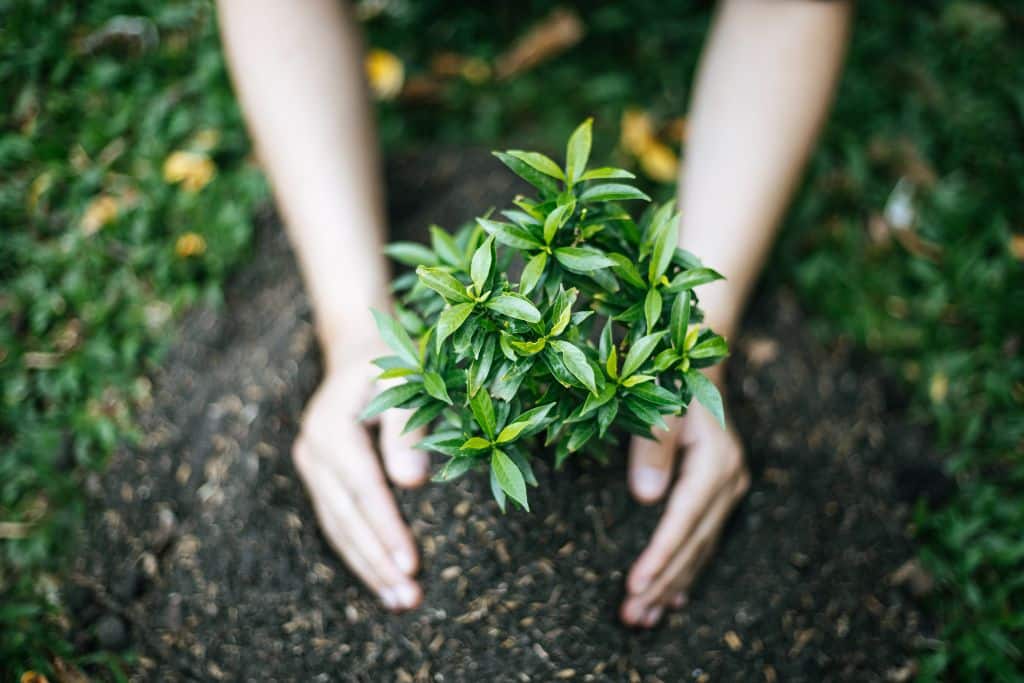Sustainable gardening and living is a way to work hand-in-hand with the environment instead of trying to control it. It is a ‘give and take’ – like No Mow May helping the pollinators and wildflowers while you get to put off mowing for longer or using old vegetable scraps for homemade compost. It is an economical, low-maintenance, and beneficial gardening style. Read on to find out more.
—
Sustainability is a bit of a buzzword at the moment. We are all trying to choose sustainable suppliers, recycle more and be kinder to the environment in the hopes we can help save the world for future generations. There are finite resources on this planet, so the idea is that we make small changes to meet our needs and keep everything functioning for as long as possible.
Did You Know?
- While nearly 70% of the planet is covered by water, only 2.5% of the water on Earth is freshwater. The rest is saline and ocean-based.
- There is only enough oil on the planet to supply the current demand for another 46 years.
- More than 12 million hectares of forest have been cut down or burned in 2023 so far.
The fact is, there are more people making use of our natural resources every day. Without some change, we are going to experience a detrimental impact in our lifetime.
Making small changes to your everyday lives can help. You can recycle your tin cans, bottles, and cardboard, repair or reuse old clothes for cleaning rags, and be more sustainable with your hobbies – like gardening.
What is Sustainable Gardening?
Sustainable gardening is the idea that you can make earth-friendly choices with your outside spaces and make the most of the natural resources and existing materials you have at hand.
You might think that having a garden and planting things is enough, but you can do so much more.
The Benefits of Sustainable Gardening
- It is considerate of local wildlife: Choosing local plants and pollinator-friendly options can support the local ecosystem of beneficial insects, birds, and many other species, thereby contributing to their longevity and overall numbers.
- It can help combat climate change: Choosing drought-tolerant plants or gardening sustainably reduces the resources you are using and the amount of wastage or greenhouse gases you’re creating.
- It can save you money: Growing your own produce, making your own compost, or using water butts can save you money in the long run.
5 Ways to Garden Sustainably
1. Conserve water
You could choose drought-tolerant plants like succulents, cacti, palms, hebes, grasses, lavender, heucheras, and Callistemon. Or perhaps, choose less grass and cultivate wildflower meadows or more wildlife-friendly options instead.
Another option is to install a water butt to catch rainwater or use grey water from your home instead of fresh from the tap. Water butts don’t have to be ugly black plastic things either – there are much more attractive water butts on the market, too.
Top Tip: Remember to water your garden in the early morning or late afternoon/early evening to prevent evaporation.
2. Go peat-free
Peat moss was a popular additive in most growing mediums as it retains water well and has a lot of nutrients. However, it comes from Peat Bogs, and the farming of it contributes to carbon emissions. So, it is another finite resource we should look to avoid depleting.
Choosing peat-free mediums gives comparable results according to the RHS, so look to those with coconut fibre or wood bases. Some local authorities sell compost derived from their recycling centres. Alternatively, you can make your own with things like grass cuttings, leaves, woody waste, veg and fruit scraps, coffee grounds, newspaper, and straw.
3. Say no to patios
One function of greenery and perennial plants is to maintain or improve carbon levels and reduce pollution. They use carbon dioxide to survive, so if you replace your patio area with shrubs or trees instead of paving slabs, you’ll be helping with climate change.
Alternatively, consider creating more natural areas with reclaimed decking. Or if you still want to add paving or patios to your garden, consider setting the slabs in sand to allow the water to permeate through or use second-hand slabs or permeable materials instead.
4. Plant pollinator-friendly plants
We need bees, butterflies, and other pollinators to maintain our natural food supplies and keep the ecosystem on track, so providing plenty of pollen-rich plants gives them a healthy and valuable food source to help them thrive.
Consider plants like lavender, zinnia, sunflowers, asters, buddleia, cosmos, foxgloves and more. And let the daisies or dandelions grow in your grass too. No Mow May is one global challenge to help pollinator numbers increase using local wildflowers.
5. Go electric or hand-powered
While petrol tools are mobile and easier for tackling larger spaces, oil is a finite resource and contributes to greenhouse gases. Electric or rechargeable options are much more suited to sustainable gardening, and hand tools are even more so.
The Time Has Come
While we know that more widespread changes are required in the farming, energy, transport, and manufacturing industries to make a big impact on climate change, any changes you make can help too. We all have one earth to live on, so let’s make some small changes to help it survive.
Learn more about how you can make your lifestyle more sustainable. Check out Earth.Org’s series ‘What Can I Do?’


















